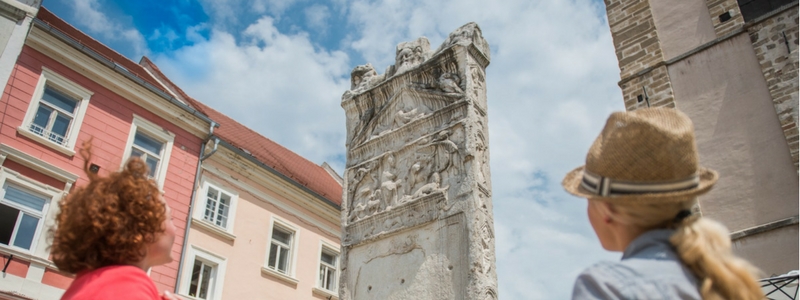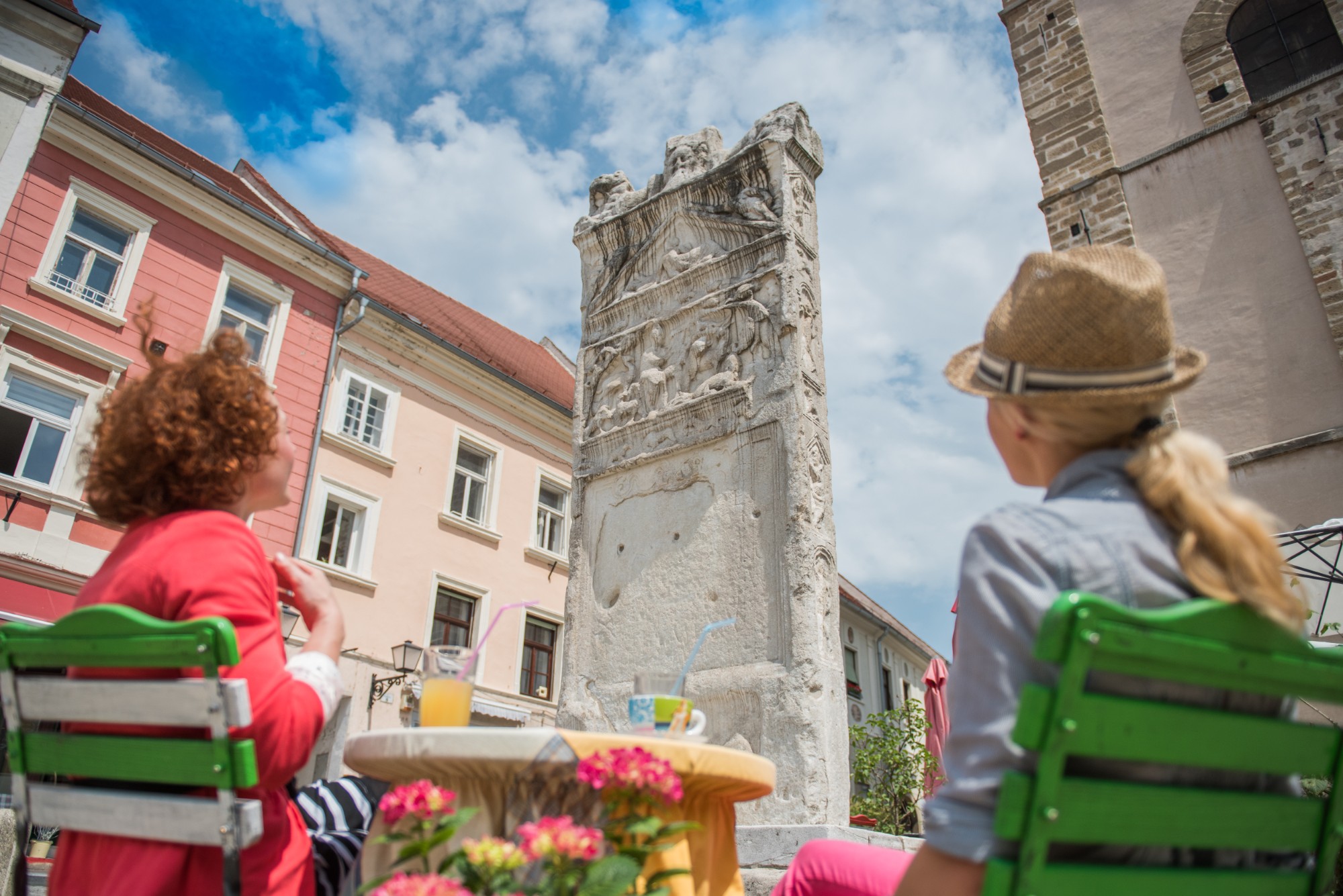Together with the Ptuj Veduta, the Orpheus Monument is the symbol of the oldest Slovenian town. Originally a grave marker, the monument was erected in the 2nd century AD; it is now located in the very centre of the old city. It is considered to be the oldest surviving public lapidary monument (stone monolith) in Slovenia, and purportedly the largest monument discovered from the Roman province of the Pannonia Superior. The almost 5-metre-high and 1.82-wide monument was erected to honour the memory of the duumvir (magistrate) of Roman Poetovio, Marcus Valerius Verus.
The monument is adorned with a relief showing the myth of Orpheus. Two lions are depicted next to a bearded head, holding an animal head in their front paws, with one sitting on each side of Serapis, an ancient Egyptian god, who was also worshipped in the Graeco-Roman world and symbolises the hope of resurrection. A relief in the tympanum below the lions depicts Selena, goddess of the moon, bending over her dead lover, Endymion, which she did every night in an attempt to revive him from his eternal slumber by caressing him with her beams. Venus is depicted in the gable, sitting with her back to the viewer and mourning the dead Adonis.
The central relief shows Orpheus playing a lyre while grieving for his lost love, Eurydice. Animals have gathered around him under a stone vault, mesmerised by his playing. On the right side of the base, Orpheus is depicted in the underworld kingdom, plucking his strings in front of the god Pluto and the goddess Proserpine. Mercury, a god who served as the messenger of the other gods, stands behind the throne of the two deities, wearing a hat and holding a herald’s staff. On the left, Heracles is depicted saving Eurydice from the underworld. In the Middle Ages, the headstone was used as a pillory (pranger). The inscription was damaged when iron restraints for fettering criminals were driven into the bottom of the monument.
Maia Juvanc

